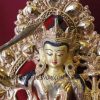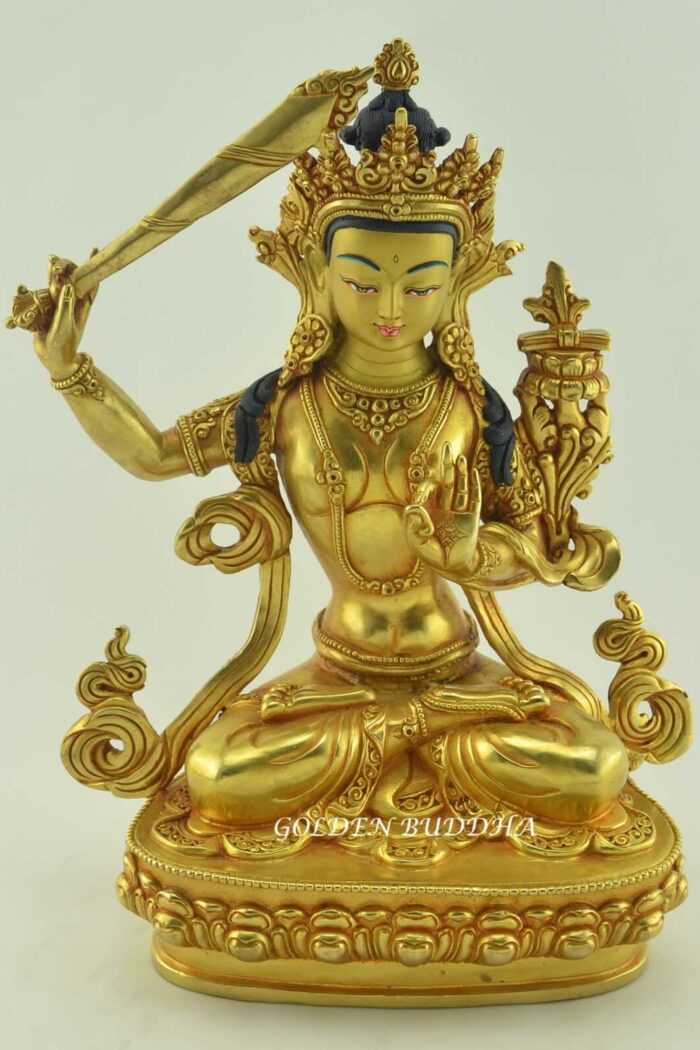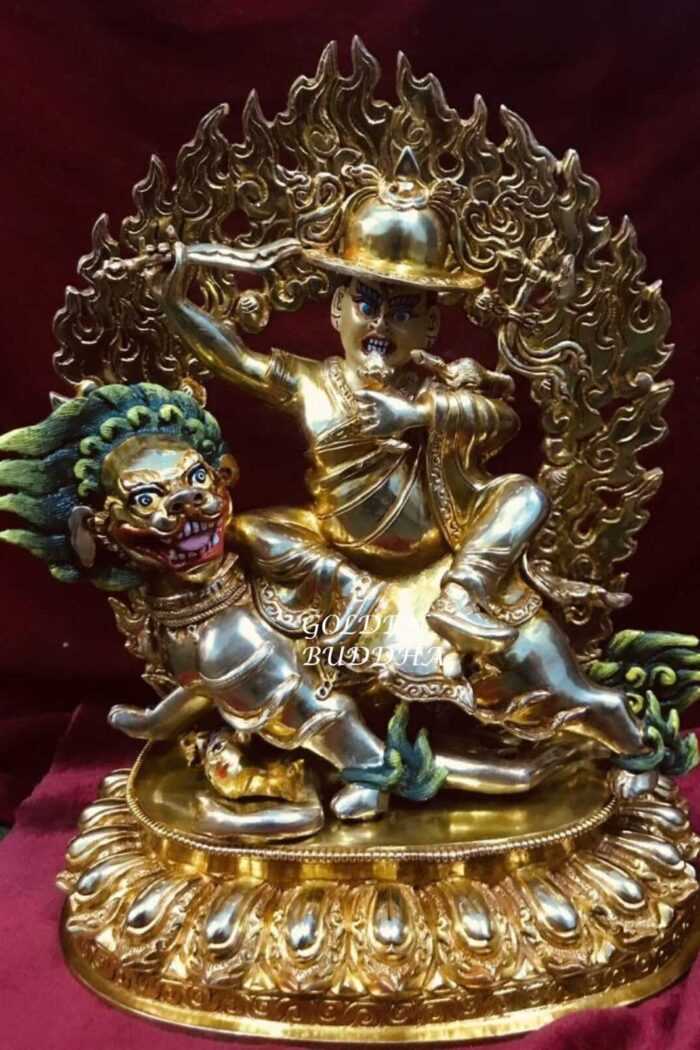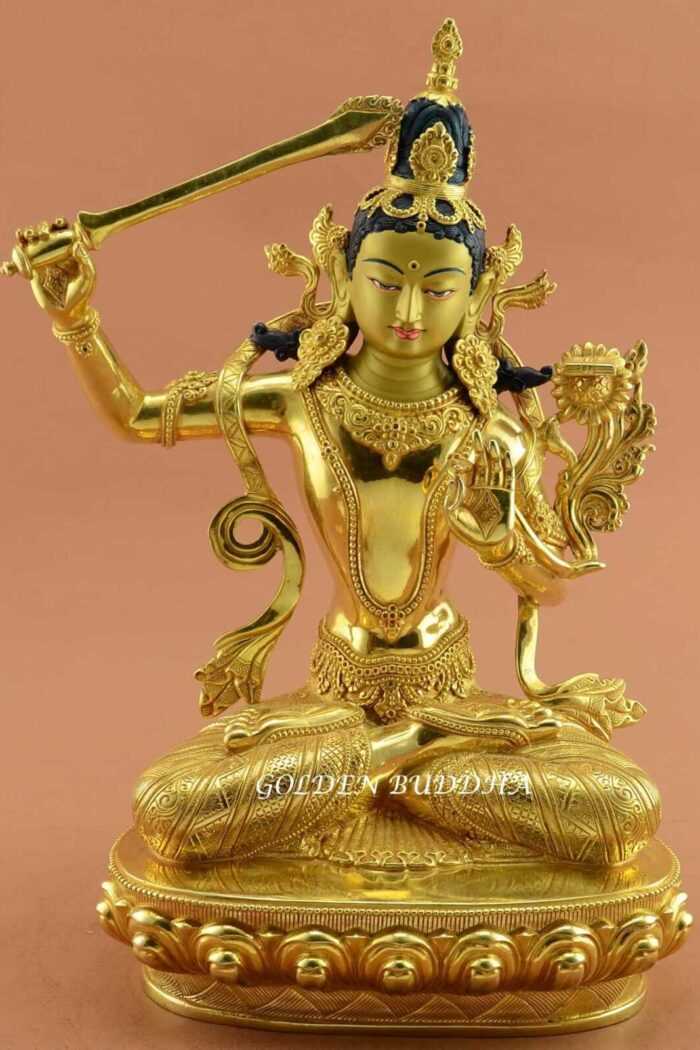The deity behind our Manjushri statue has his origins in the Prajnaparamita Sutra. In English “prajna” translates as wisdom and “paramita” translates as perfection. Therefore, Manjushri is believed by devotees to embody the Buddha’s wisdom. Indeed, this is the highest and most pure form of wisdom as described in the Prajnaparamita Sutra.
Additionally, Manjushri is one of the oldest and most venerable Bodhisattvas similar to Avalokitesvara. The description of perfected wisdom is very elaborate and detailed as found in the sutra. As a result, the Prajnaparamita Sutra took 7 centuries to complete. Progress writing the sutra was initiated in 100 ACE and it was finally completed in 600 ACE. Learn more about Manjushri here.
Manjushri Statue Features
Our Manjushri statues are hand sculpted by the world class artisans in Patan, Nepal. Gold is the specialty of the Shakya caste which is featured on this Manjushri statue. The Nepali traditional lost wax sculpting method was developed over 1000 years ago. Additionally, the methods have been protected within the caste from generation to generation. As a result, the statues they produce are the best in the world.
This Manjushri statue features his classic pose with the flaming sword raised over his right shoulder. However, this depiction represents the very effective yet gentle annihilation of ignorance. It is not meant to be a violent act. Additionally, our Manjushri statue is depicting the Abhaya mudra with the left hand held in front of the chest. As a result, devotees should feel fearlessness and protection when viewing this statue. The objective is to encourage the use of wisdom to defeat ignorance. Thus, light will triumph over darkness.
Manjushri sits in full lotus pose on a single lotus pedestal. Additionally, there is a lotus flower growing over his left shoulder with an open blossom. The Prajnaparamita Sutra is open and is lying inside the open lotus blossom.











